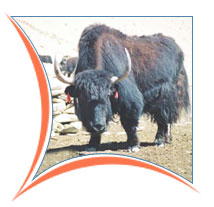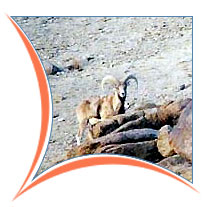       |
 |
India is magnified country with more to do, see and discover than virtually any other place on our planet with sun swept beaches , towering mountain busting cities sparkling rivers quaint villages and vast forest how much of this abundant beauty have any of us actually seen. |
| Adventure Tours | Ayurveda Tours | Religious Tours | Safari Tours | Tribal Tours | Golden Triangle Tours |
|
Hello
Indya --›
Ladakh
Tours --› Ladakh Wildlife Package
|
Ladakh Wildlife Tour
Duration : 19 Nights / 20 Days
Destinations Covered : Leh - Spituk - Zinchen - Rumbak Valley - Shingo - Skiu - Markha - Thachungtse - Nimaling - Gya
Ladakh is also home to some beautiful and rear birds like the critically endangered black necked crane. Bar headed geese, woodpeckers, ducks, partridges, barbets, kingfishers, parakeets, swifts eagle, owls to name a few are some birds commonly seen
 in Ladakh. This rich rather exclusive wildlife however,
is severely threatened by habitat loss and poaching
in Ladakh. This rich rather exclusive wildlife however,
is severely threatened by habitat loss and poaching Yak
The largest animal of the cold desert is the yak(dong), a wild ox. First described only a century ago by the famous Russian naturalist-- explorer, N.M.Przewalski, the wild yak is definitely more imposing than its placid domestic counterpart. Immensely shaggy and weighing about a tone it has curved horns whose tips can be as wide apart as 90 cm. and measure 76 cm. over the curves. It can easily be distinguished by its long black hair, which is tinged with gray at the muzzle. Spending its summers at a height above 6,000 meters, in winter it moves in herds to the lakes, marshes and lower valleys.
Nyan
All the world's sheep are closely related and zoologists generally believe that each kind is only a variation of the same species. The largest and most magnificent of wild sheep is the nyan also called the Great Tibetan sheep (Ovis ammon). Roughly 200 of these antelope - like animals are found in the extreme eastern portion of Ladakh. The horns of the nyan measure up to 145 cm. and the animal normally remains at a great height, rarely descending to a level below 4,500 meters.
Avifauna
The Himalayan and Tibetan snowcocks-large majestic birds much hunted for their meat, and partridges breed at a height about 5,000 meters. The rest are visitors, moving down to the foothills in autumn in an annual ritual of altitudinal migration. Other birds move still further, horizontally following ancient routes of global migration.
The highest realm belongs to the birds of prey and carrion eaters. These include choughs, griffon vultures, ravens and lammergeiers(bearded vultures), which follow man and animal wherever they roam. Choughs and ravens have been seen as high as 6,150 meters along with the lammergeiers, which have a spectacular three meters wingspan, which enables them to glide on high powerful upcurrents. Lammergeiers are never found far from mountains and locals awed by their size f
 alsely believe them to be capable of carrying
away young lambs.
alsely believe them to be capable of carrying
away young lambs.Urial
The urial or shapu, (Ovis orientalis), which weighs 85 Kg. and has horns measuring upto 99 cm., is the smallest of the world sheep in eastern Asia, its body just about as tall as its horns. These sheep prefer the grassy mountain slopes, usually at a height of 3,000-4,000 meters. The meeting of this species, as is the case with most sheep during December-January and they give birth to their young around May. The need for protection of the urial is great as they are with in easy reach of hunters. Their numbers have been declining rapidly and it is estimated that there are no more than 500 in Ladakh.
| Ladakh Tours: Hemis Festival Tour || Ladakh Monasteries Tour || Ladakh Holiday Vacations || Ladakh Trekking Tour || Ladakh Wildlife Package || Markha Valley Trek || Ladakh Jeep Safari Vacations || Nubra Valley Trek |
| Home | About Us | Contact Us | Reservation | Email | Customize Your Own Trip | Disclaimer | Links | Rajasthan Tour Packages | Golden Triangle Tours | Trip to India | Goa India Tourism | Tour Packages in India |
| Ayurveda in India : Neem | Herb Oils | Herb Treatment | Ayurvedic Medicine | Feminine Zone | Unani Herbal Healing | SAS Pharma | Food / Dietary Supplements | Hydro Therapy | Online Education in Ayurveda | Enquiry Form | Business | Oil Massage | Hygiene Care | Henna |
| Our Network Websites:- Goa Tourism | ACGIL | Super Stores India | Indian Tourism Directory | Yatra India | Holiday Tourism India | Goa India Tourism | Fashemb | Total Resource 4 U | Travel Portal India | A Trip 4 India | eMetal Crafts | Packers & Movers India | Packers and Movers Directory | Indian Handicrafts | Builder Hardware Directory India |






